New Roomba i7+ vs Roomba 981
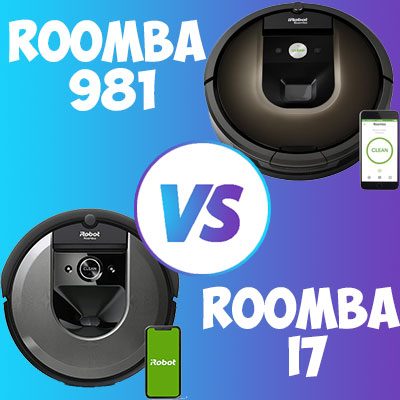
Hello folks! Today I want us to find out whether the Roomba 981 has finally been dethroned as the best Roomba model and consequently, the best robot vacuum cleaner in the market.
Find all that in this comprehensive face to face Roomba i7+ vs. 981 comparison review.
If you have been peeping through the tech news, especially Smart home topics, you must have heard of the new Roomba i7+ which is the latest model from iRobot, arguably the best robot vacuum brand.
I know you must have been interested in the conversation between Roomba 960 vs. 981 which were the best and latest Roomba models but with the coming of the i7+, maybe you should first find out if it should change your mind on what Roomba to purchase.
As usual, we ordered the robot vacuum and were it not for the delayed delivery; you should have read this review a week ago. So without further ado, let’s get straight into the Roomba 981 vs. i7+ comparison review to find out if the i7+ has finally beaten the Roomba 981.
Comparison Table
1.Roomba 981 – Best Performance and Durability
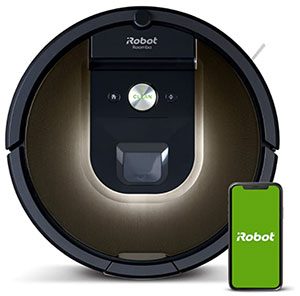
Despite the high price tag, it has proved that it is worth every penny by putting out the best performance and durability. Several other models from other brands have come, but none has been able to beat the Roomba 981.
One of the significant features of the Roomba 981 is the new Gen 3 motor that delivers ten times more air power. It can also run on two power modes, with the high power mode, Carpet Boost making it best for high pile carpets.
You will also like the new iAdapt 2,0 navigation system that blends the data from the sensors as well as the camera for more accurate and precise navigation in high traffic rooms.
2.Roomba i7+ – a Fully Robotic Vacuum Cleaner
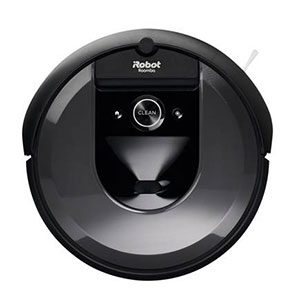
A lot of us expected iRobot to release a Roomba 1000 series. But instead, they put forward a completely different product, so we are about to see its worthiness in the face of the Roomba 981.
The Roomba i7+ is quite similar to the Roomba 981, but the major difference is the fact that this model can empty the bin by itself.
iRobot built a new self-cleaning system called Clean Base. This makes it a fully robotic vacuum cleaner now that the Roomba 981 and the rest will require human intervention when the bin is full.
Roomba i7+ vs. Roomba 981 Comparison Review
Now, we have seen the major highlights of each model and the salient features. So, it is time we get to the main agenda of the day, comparing the Roomba i7+ to Roomba 981.
To help you get the most out of this comparison review, we have tailored it to serve as a comparison review as well as a robot vacuum buying guide.
We will compare the most critical aspect of a vacuum cleaner and see how the Roomba i7+ and Roomba 981 square it out. For every factor, we will then give our verdict on what’s the best Roomba between the two.
Design, Dimensions, and Aesthetics
Roomba i7+ Design, dimensions & aesthetics
For the Roomba i7+, the round shape has been maintained. However, it has a smaller, width, 13.4-inches to be precise and stands at 3.7-inches.
Regarding the weight, this model is much lighter at 7.45lbs only. It has been finished in a much darker charcoal finish, but the large CLEAN button is still on the same spot as it is on the Roomba 981.
verdictWinner: I don’t think there is a clear winner here now that each model has advantages and disadvantages. While Roomba i7+ might be lighter, the Roomba 981 is slightly lower.
But I think the benefits of a lower robot vacuum outweigh those of a lighter robot vacuum. This is because most of the furniture has low ground clearance and thus, you need a low-profile vacuum to creep under this furniture, where most dirt hides.
Cleaning Performance

Now, next up, we want to see how the Roomba i7+ compares to Roomba 981 when it comes to cleaning performance.
This is a very important segment of this comparison review. So, we will be a little bit detailed.
We are going to discuss the different aspects that you should consider when buying a robot vacuum cleaner and most importantly, a comparison of Roomba i7+ vs. Roomba 981.
Without further ado, let’s get to business.
Cleaning Priority – This is the most important aspect when choosing a robot vacuum cleaner. Not all vacuums will handle all your cleaning needs as each model is specialized for specific duties.
Roomba i7+ Cleaning Priority
Roomba i7+ has been designed to offer the best in class performance on hard floors, hardwood, tile, carpets, pet hair, and allergens. In short, this is an all-round robot vacuum cleaner.
Motor – One of the integral parts of a robot vacuum is the motor. This is the part responsible for generating the suction power that picks up dirt from the floors. I hope you understand the essence of high vacuum power, so let’s see which Roomba has the best motor.
Roomba i7+ Motor
On the other hand, the Roomba i7+ maintains this same motor and also has Eco and Turbo mode just like Roomba 981. The vacuum power ranges from 1,000 Pa to 1,700 Pa, and that’s why it’s suitable for high pile carpets.
Brush system – Now, let’s look at the brush system of the two vacuums. If you have pets, this is an aspect you want to be very careful on lest you end up with a vacuum that gets tangled now and then.
Roomba i7+ Brush system
Nothing much has changed in the new Roomba i7+, probably because of the efficiency of the current Roomba brush technology. You can trust in on your hardwood floor and also amidst long pet hairs that often tangle the brush. The rubber material also makes it long lasting and thus, easy to maintain.
Filter – If your house usually has a bad odor, maybe from the pet dander or other causes, then you need a HEPA filter. These filters are much more efficient than what the average robot vacuums come with.
Roomba i7+ Filter
The filter is another feature that Roomba i7+ and Roomba 981 share in common. The i7+ also uses the AeroVac filtration system so if you have nasal allergies; it is still a great option.
Dirt Detect – If you are not new to Roombas, you understand that one of their unique features is Dirt Detect; a function that finds places with dirt concentration. It then tells the Roomba to advance to that place and switches to Spot mode.
Roomba i7+ Dirt Detect
The same applies to the Roomba i7+. It will also find places where there is concentrated dirt, and the advantage of the i7+ is the fact that it will probably clear all the dirt courtesy of the bin-emptying system.
Bin management – Lastly, let’s look at how these two robot vacuums manage their bins. The first thing to scout for is the bin capacity. But then, here’s a spoiler. The Roomba i7+ has a bin emptying system.
Roomba i7+ Bin management
Roomba i7+ own bin is smaller and designed for 450-500 ml. Gladly, Roomba i7+ comes with an automatic bin emptying system. It is compatible with the iRobot CleanBase unit. Once the bin is full, the robot will go to the disposal unit and empty the bin.
verdictWinner: Having compared the features, it’s time we give our verdict on what’s the best Roomba between the 981 and i7+.
Here, we want to go off course a little bit by also analyzing the cleaning performance before declaring the winner.
As usual, we tested the two robot vacuums to ascertain which model will be a more practical solution for your cleaning needs.
Roomba 981 vs. i7+ Cleaning Tests
The first thing we embarked on after receiving the Roomba i7+ was to schedule a comprehensive cleaning test to see how it performed.
We used some of the everyday dirt on a hard floor, low pile carpet and high pile carpet.
The two bedroom apartment houses two pets; my German shepherd and my wife’s cat.
We used the everyday dirt that you will be dealing with on a daily basis; cereal, sugar, rice, flour, sand and so on.
Here are our findings.
Hard floors (Hardwood, tile)
A better part of the house has tile except for the living room. The rest of the house has a tile floor, so that was the perfect place to test the performance of these two robot vacuum cleaners.
It is important to note that on these two surfaces, the performance was just the same and that’s the reason we clustered them together. Here is a representation of their performance.
Roomba i7+ hardwood floor cleaning
Both the Roomba 981 and i7+ performed exceptionally on hard floors. They managed to collect 100% of the dirt. This was not a good test enough bearing in mind even the cheap robot vacuums like Deebot N79s and Shark ION V750 excel on hard floors as well.
Low Pile Carpet
There has been a major misconception when it comes to shopping for the best robot vacuums for carpets because every brand labels their product as carpet robot vacuum.
Well, the fact of the matter is that not every robot branded as robot vacuum for carpet will handle all carpets. In most cases, they can only work on low pile carpet and not high pile as you will see below.
Roomba i7+ Low Pile Carpet
On low pile carpet, the two Roombas start getting noticeably overwhelmed. As you can see, the small dirt was a problem, especially flour and kitty litter. But this is far much better than what your average robot vacuum cleaner will do.
High Pile Carpets
This is the real test for many robot vacuum cleaners, especially the cheap robot vacuums that are commonly labeled as carpet robot vacuums. But what makes vacuuming a high pile carpet hard? Well, the high pile has a lot of interwoven fabric that leave a lot of spaces where the dirt hides. The denser the pile, the more vacuum power required.
To show you how vacuum power is critical, we have compared the performance of Roomba 981 and i7+ with Gen 3 motors to Roomba 650 with a 1st Gen motor.
Roomba 981 High Pile Carpets
As you can see, even for the best robot vacuum cleaners, it is still hard to clear all the flour. The fine particles hide deep inside the pile. That means, even after buying a robot vacuum cleaner, your regular vacuum is still indispensable.
You will need it for general carpet vacuuming, maybe once in a blue moon. Also, you can notice that in as much as the two vacuums have the same motor, the Roomba i7+ was dominant because it was still new; the Roomba we used is like eight months or so.
verdictWinner: Now, what’s the best Roomba regarding cleaning performance between Roomba i7+ vs. Roomba 981? The Roomba i7+ carries the day because of the bin-emptying mechanism. You won’t have to worry about the bin full notifications anymore.
Battery Performance
The autonomy of a robot vacuum cleaner is another critical consideration. You want a robot vacuum that will complete vacuuming the house on a single charge. If it can’t, at least it should be able to resume cleaning after recharging.
You should also choose your robot vacuum cleaner depending on the surface. Note that on hard floors, a robot vacuum’s autonomy is longer than on a high pile carpet.
So, what does Roomba 981 and i7+ offer as far as battery performance is concerned?
Roomba i7+ Battery Performance
The Roomba i7+ is also an intelligent robot vacuum cleaner that will automatically go to the charging base once the battery is low. It will recharge and resume cleaning just like the Roomba 981. However, its lithium-ion battery is rated 1830mAh only with a runtime of around 75 minutes.
verdictWinner: Still, the Roomba 981 deserves to be the best Roomba courtesy of the longer runtime. Even though they will both resume cleaning after recharging, the recharge time is quite long so longer runtime reigns.
Navigation and Maneuverability

Unless you want to be finding your vacuum stuck all the time, it is imperative that you buy a robot vacuum with the best navigation system as well as maneuverability. When it comes to the Roomba 7150 vs. 7550 vs. 981, the debate is around iAdapt 3.0 vs. iAdapt 2.0.
Roomba i7+ Navigation
On the other hand, the Roomba i7+ comes with a much more advanced navigation system, call it iAdapt 3.0. In my opinion, there is nothing much it brings on board as the sensor and camera is still the principle.
The difference is the fact that the i7+ uses Imprint™ Smart Mapping technology. It enables the Roomba to identify the room it is and keep a record that allows it to remember the different rooms. Carpet to floor transition is seamless, and so is the head adjustment. Roomba i7+ also supports Virtual Walls, but it comes with only one node.
verdictWinner: Definitely, the Roomba i7+ takes the crown here. You will like the Imprint Smart Mapping feature as it enables you to instruct the robot where to clean, and when.
Smart Features and Convenience
Roomba i7+ Smart Features and Convenience
On the other hand, Roomba i7+ also comes with the Wi-Fi and also supports Alexa and Google Assistant. Just like Roomba 981, it supports wireless upgrades offered by iRobot. This robot also supports Schedule function.
verdictWinner: I wouldn’t say there is a winner really because both vacuums have the necessary features when it comes to Smart convenience. But overall, the Roomba i7+ is the winner because of the convenience of CleanBase.
Frequently Asked Questions
Has the Roomba 980 been discontinued?
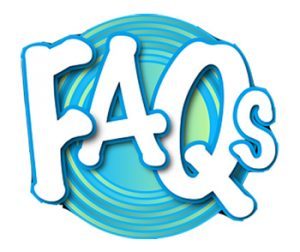
Which Roomba model is best i7 or 981?
How do you empty a Roomba 981?
Should I run my Roomba everyday?
Roomba i7 vs roomba 981: which vacuum is the best for large dwellings?
Our Verdict
Now, we have come to the end of our Roomba i7+ vs. 981 comparison review. It is time to choose the best Roomba between the two high-end vacuums.
In the Roomba 981 vs. i7+ debate, the Roomba i7+ looks very promising and better than Roomba 981.
However, when it comes to Roomba 981 vs. i7, it is a different story. As mentioned earlier, the only difference between the Roomba i7 vs. i7+ is the inclusion of the Clean Base in the latter. That means the Roomba has a chance of beating the Roomba i7 but not the Roomba i7+
However, in as much as we may have loved the Roomba i7+, it has not passed the test of time yet. We have barely had the Roomba i7+ for a month. It’s not yet in the market, so we can’t guarantee its reliability. Maybe after a few months, once thousands of units have been sold, that’s only when you can satisfactorily say that the Roomba i7+ is the best.




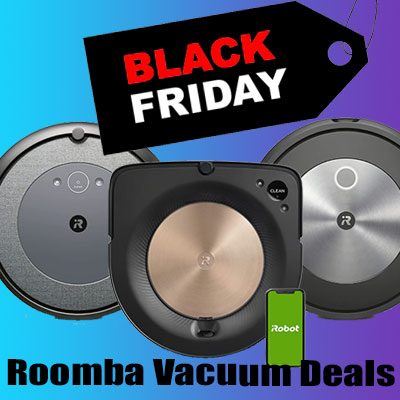
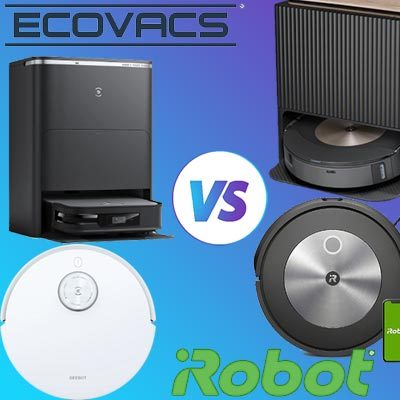
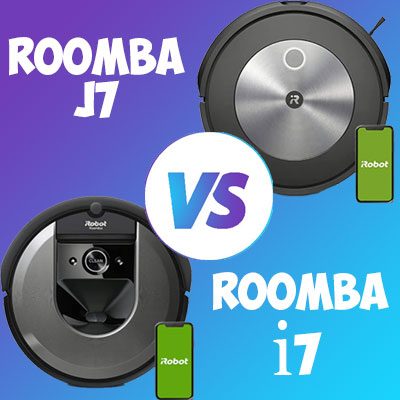
Joe Rando
The power and cleaning ability of the i7 did not advance noticeably over the 980; I have the 980 and I think the cleanining is amazing over my 2200 sq foot floor plan, with varying surfaces. The run time is better on the 980 than the i7. The 980 needs to make several trips back to recharge if I expected the whole house to be cleaned, but I have used the virtual walls to isolate areas or closed doors to limit and rotate cleaning areas. The bin capacity when I first started with the 980 was a challenge; I needed to empty the bin before cleaning jobs were done. This has improved now that I am on a regular weekly schedule. The mapping ability of the i7 might be cool to set up, but my low tech process of limiting and controlling the cleaning area for my 980, works just fine. It is my house after all, not the Hilton! I was intrigued by the i7 for the self emptying base but not enough to give up my 980. The i7 is chunky and won’t go under areas that my 980 would. Regarding the emoting tower for the i7, I see that it is available as a stand-alone purchase. What would prevent someone (or the company) from offering a replacement bin for the 980 that would allow it to use the tower and be charged and emptied?? That would be a feat of reverse engineering!
Thomas Burba
I own one 980, Not many 980 were sold due to high $900 price. The low height design is perfect for under our furniture. New i7 will be too high and blocked for some furniture. Important 45% increase in battery run time. The Roomba company are becoming greedy with the i7, they need to offer the new bin redesign option for the 980. .
3500sq ft to clean of both hardwood and carpet, Purchased in July 2017.
victoria
I have been trying to decide between the 980 and regular i7 and this review was really helpful! I have a messy parrot who flings food everywhere so I have to vacuum at least once a day. It is great to know that the i7 works as well (or better) on higher pile carpet than the 980 with the various types of “dirt” tested.. I am sold. Thank you!
David Stidham
Thank you for the comparison on features and test results between the 980 and i7. As a new owner of robotic cleaners, and owning the i7+, I can say, without any reservation, that the self-emptying ability provided to the i7+ is what the entire niche market has been lacking. Now that iRobot has brought this to market first, I predict that the other robotic manufacturers will follow suit. My house is large. For the cleaner to cover everything in a “single” scheduled cleaning requires the bin to be emptied multiple times. So, while the Roomba 980 may have a greater endurance over the i7, the fact that the i7 will go home and empty the bin at the clean base, recharge, and resume, trumps the 980’s endurance. The alternative is for you to break up your large floorplan into smaller sections dictated by the capacity of the bin and your willingness to manually empty it before sending the robot onto its next “room”.
I have enjoyed kicking off a cleaning of the entire floorplan in the morning, and coming home to a completed job. Sure, between cleaning runtime and charging cycles, it takes 9 hours … but, my entire space is clean (well, cleanish … these are still no replacement for a real vacuum and human).
Marta Magnus
What about the dust bags of the i7: are they reusable?
Marta M.
Hi, Richard! Thank you very much for this article! Very useful and complete! Do you think the i7 is still worthy even if having to spend money in a regular basis to purchase the disposable bags?
Troy Zwick
You are so cool! I don’t think I’ve read through anything like this before. So great to discover someone with some original thoughts on this subject. Seriously.. thank you for starting this up.